Imagine losing half of your potential sales in the blink of an eye. Sounds dramatic? According to recent research, 50% of consumers have reduced their spending or stopped buying from a brand entirely after a bad eCommerce customer experience.
When it comes to online shopping, customer experience (CX) is the key to building trust, fostering customer loyalty, and making your online store stand out in a sea of competition.
But creating a great customer experience isn’t just about having a user-friendly website or offering the lowest prices. It’s about every single touchpoint your customers have with your brand, from the moment they land on your website to the post-purchase follow-up.
In this article, I’ll offer some practical strategies for improving eCommerce customer experience and explore the crucial role that your brand communications play in driving conversion rates and building customer relationships.
- Why Communication is Key in eCommerce
- 8 Ways to Improve eCommerce Customer Experience
- 1. Personalize the Shopping Experience
- 2. Streamline the Checkout Process
- 3. Offer an Exceptional eCommerce Customer Experience with Support
- 4. Improve Delivery Updates and Transparency
- 5. Simplify the Returns and Refunds Process
- 6. Keep the Conversation Going with Post-Purchase Engagement
- 7. Implement Loyalty Programs
- Unlock eCommerce Success Through Customer Experience
Why Communication is Key in eCommerce
When it comes to creating an exceptional eCommerce customer experience, communication is the glue that holds everything together.
Every customer interaction counts, from the sales copy on your product pages to your order confirmation emails. It’s critical to prioritize clear and concise communication throughout the entire customer journey to meet customer expectations.
Transactional emails are one of the cornerstones of eCommerce communication.
These automated emails, triggered by customer actions like placing an order or creating an account, might not be as flashy as your marketing campaigns, but they play an important part in building relationships with your customers.
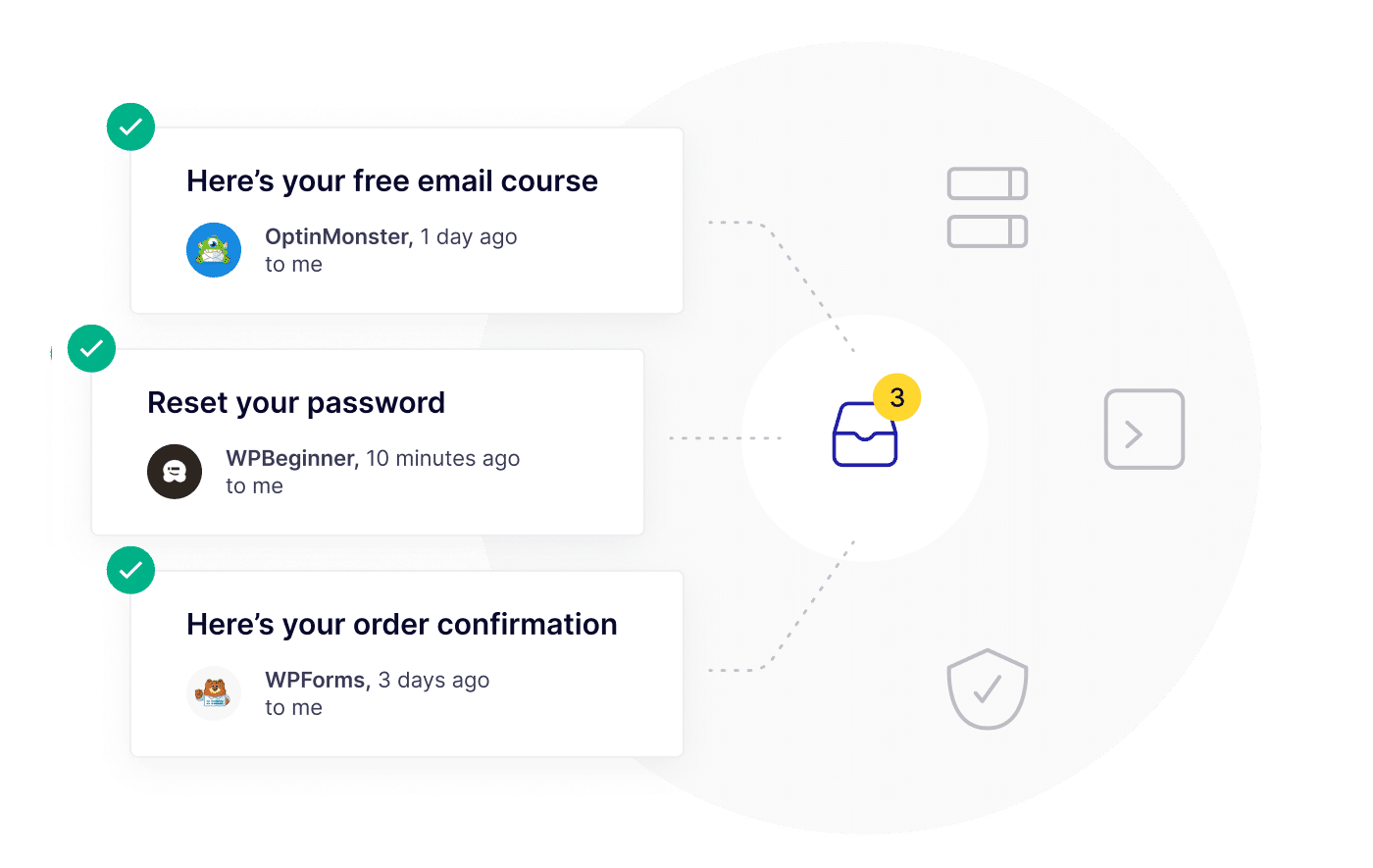
By using transactional emails effectively, you’ll not only keep your customers informed and up-to-date but also show them that you value their business, which is essential for customer retention and satisfaction.
Building Trust Through Reliability
When it comes to online shopping, trust is everything. Customers are taking a leap of faith every time they place an order on your online store, and it’s up to you to prove that their trust is well-placed.
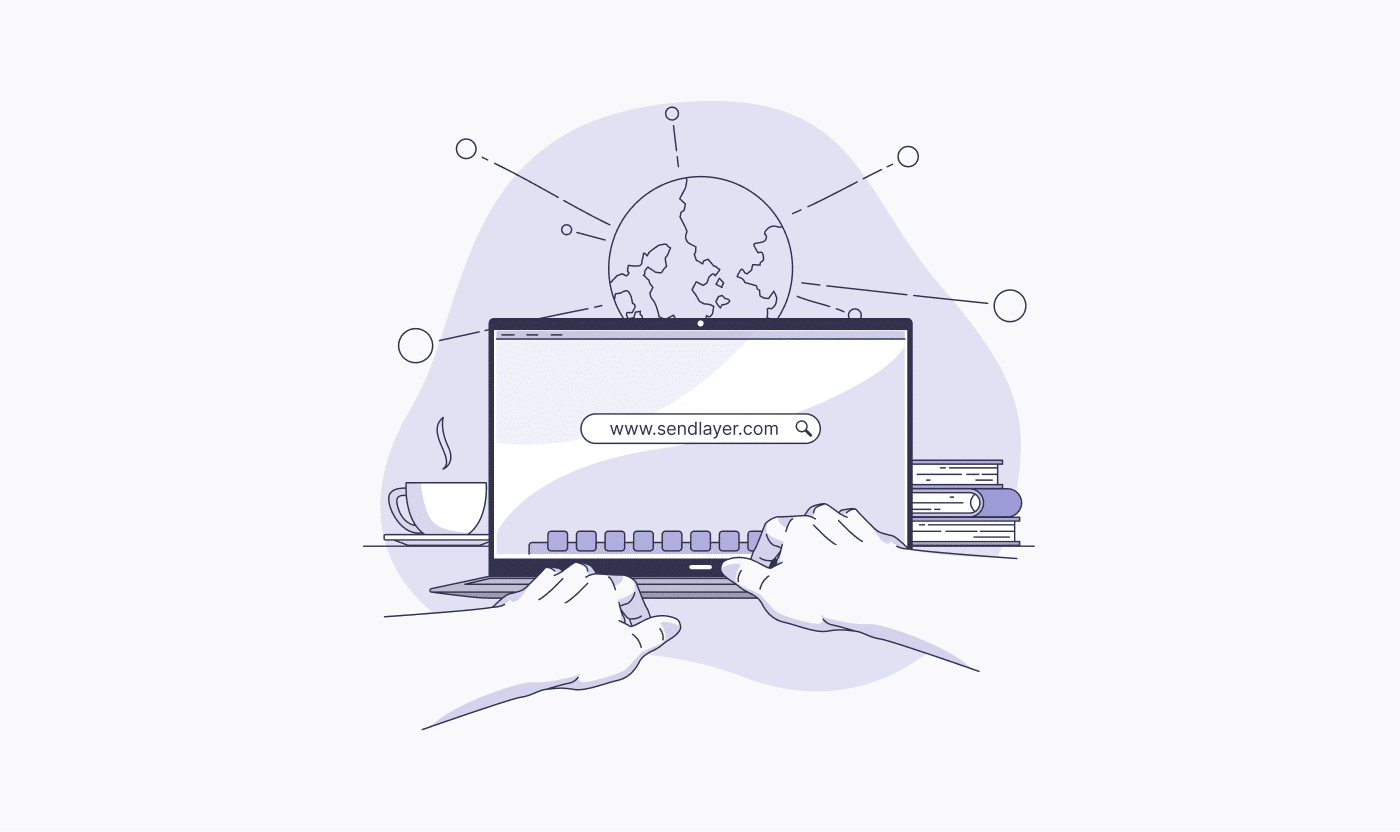
When a customer places an order, they expect the confirmation email to hit their inbox almost instantly. Prompt delivery of order confirmations, shipping updates, and other transactional emails not only keeps your existing customers informed but also builds brand loyalty.
On the flip side, slow or failed email delivery can have a devastating impact on customer experience. It can cause online shoppers to feel frustrated and lose trust in your brand. In fact, email open rate statistics show that transactional emails have significantly higher engagement rates compared to other forms of communication, highlighting their importance in building customer relationships.
To reduce the risks of undelivered or slow emails from your online store, it’s crucial to choose a reliable transactional email provider like SendLayer to ensure your messages are delivered securely and efficiently to your customers’ inboxes.
SendLayer is built to integrate effortlessly with email platforms like WooCommerce, BigCommerce, and Magento, ensuring all your crucial store messages reach the intended recipient rather than ending up in the spam folder.
But building trust goes beyond just delivering emails on time. Transparency is also key. By using transactional emails to provide proactive updates, such as informing customers about potential delays or providing clear instructions for returns and exchanges, you show you’re committed to keeping your customers informed and providing the best service possible.
8 Ways to Improve eCommerce Customer Experience
Of course, you must get the basics right, such as ensuring easy and intuitive navigation, making sure your website is optimized for mobile devices, and providing clear and detailed product information.
But what else can you do to provide a truly great eCommerce experience and stand out from the competition?
1. Personalize the Shopping Experience
A recent study showed that over 70% of consumers now expect personalized experiences and feel frustrated when they don’t get them.
Personalization is no longer a nice-to-have – it’s a must-have. By leveraging customer data about preferences and behavior, you can create tailored experiences that make each online shopper feel valued and understood, improving the overall user experience.
One powerful way to personalize the shopping experience is through product recommendations on your eCommerce website.
By analyzing a customer’s browsing and purchase history, you can suggest products that are highly relevant to their interests and needs. This not only makes their shopping experience more efficient but also increases the likelihood of them making repeat purchases.
You’re probably familiar with seeing related product recommendations when shopping on eCommerce sites like Amazon, but consider extending these recommendations beyond your website.
Transactional emails also offer a prime opportunity for personalization. Instead of sending generic order confirmations or shipping updates, you can tailor these emails to each customer’s specific purchase and preferences.
For instance, you can suggest a complementary product based on their order, or offer a discount code for their next purchase to encourage repeat business and boost customer loyalty.
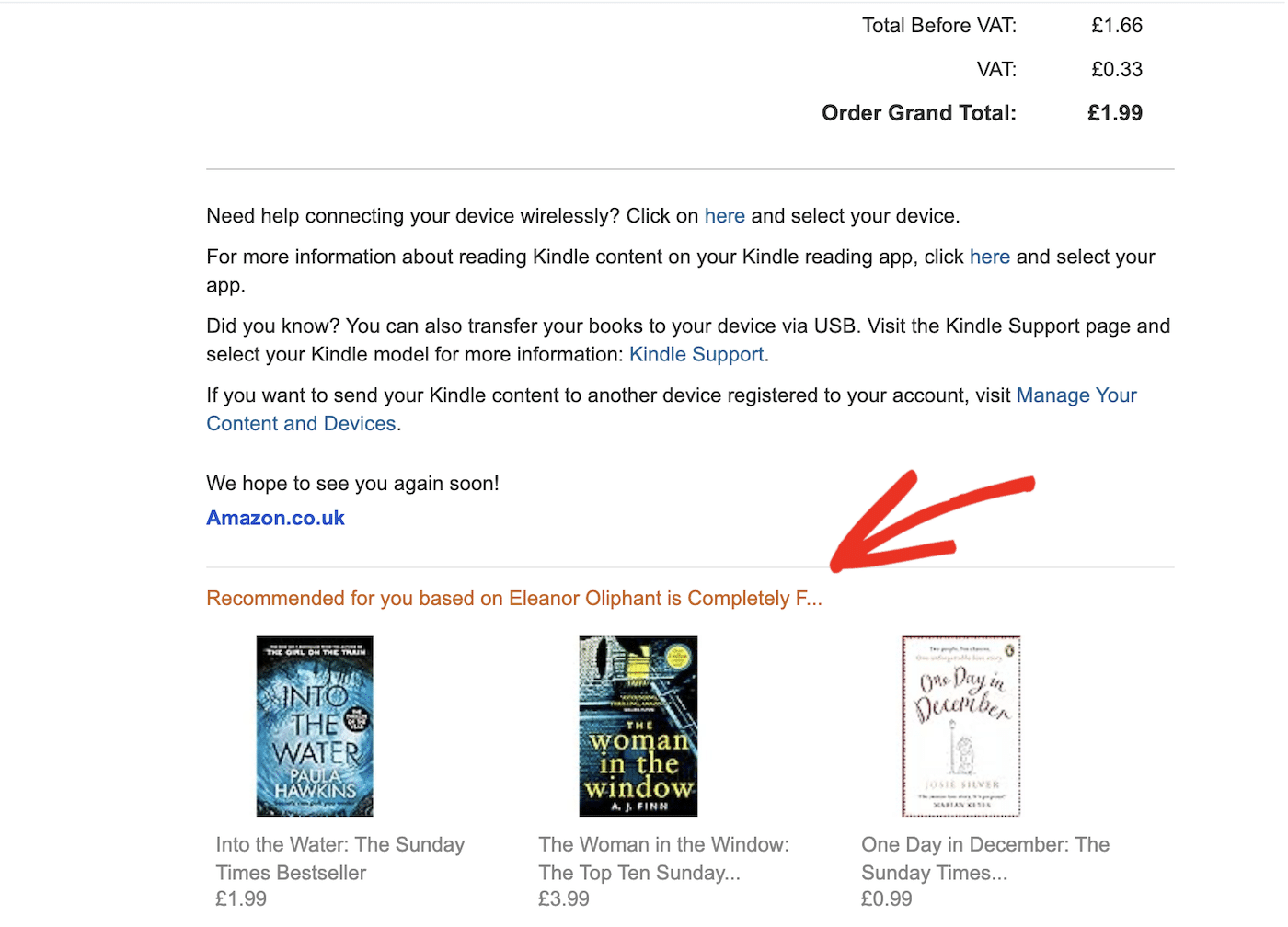
Push notifications are another great tool for personalization. For example, you can welcome new customers with a special offer, discount, or freebie to encourage them to make their first purchase.
Or, if a customer abandons their cart, you can send a gentle reminder notification with a tempting incentive to complete their purchase.
See some more ideas for using push notifications in eCommerce to both provide a better customer experience and boost revenue.
By investing in personalization strategies, you’ll not only create a more enjoyable shopping experience for your customers but also promote brand loyalty, increase sales, and stand out from your competitors.
2. Streamline the Checkout Process
The checkout process is a critical stage in the eCommerce customer journey, and it can make or break a sale. Over 80% of shoppers will abandon a checkout process that’s too long or difficult. A smooth, hassle-free checkout experience is essential for converting potential customers into buyers and minimizing cart abandonment.
One easy way to streamline the checkout process is by offering a guest checkout option. While creating an account can have its benefits, many customers prefer the convenience of a quick, no-strings-attached purchase.
Another option to consider is providing multiple payment options. Customers have varying preferences when it comes to payment, and offering a range of options – such as credit cards, PayPal, Apple Pay, and Google Pay – can cater to a wider audience and improve customer satisfaction.
But the checkout experience doesn’t end once the customer clicks “Place Order.” This is where your transactional emails have a chance to shine. Sending clear and timely order confirmation and shipping update emails is crucial for reassuring customers and keeping them informed about the status of their purchase.
A well-crafted order confirmation email should include all the essential details at a glance. This email serves as a receipt and provides customers with peace of mind that their order has been successfully processed. See our suggestions on how to improve transactional email design and email content optimization with AI for more tips for better order confirmation and other eCommerce emails.
3. Offer an Exceptional eCommerce Customer Experience with Support
Remember, your business is not just your website. People remember the interactions they have with you on a personal level, and a great customer support teamcan go a long way in making their shopping experience an enjoyable and memorable one.
To start, it’s preferable to provide an omnichannel approach for customer support. While some customers prefer the immediacy of live chat or chatbots, others may favor email, social media, or phone support. By offering a range of options, you cater to different communication preferences and make it easy for customers to reach out when they need assistance.
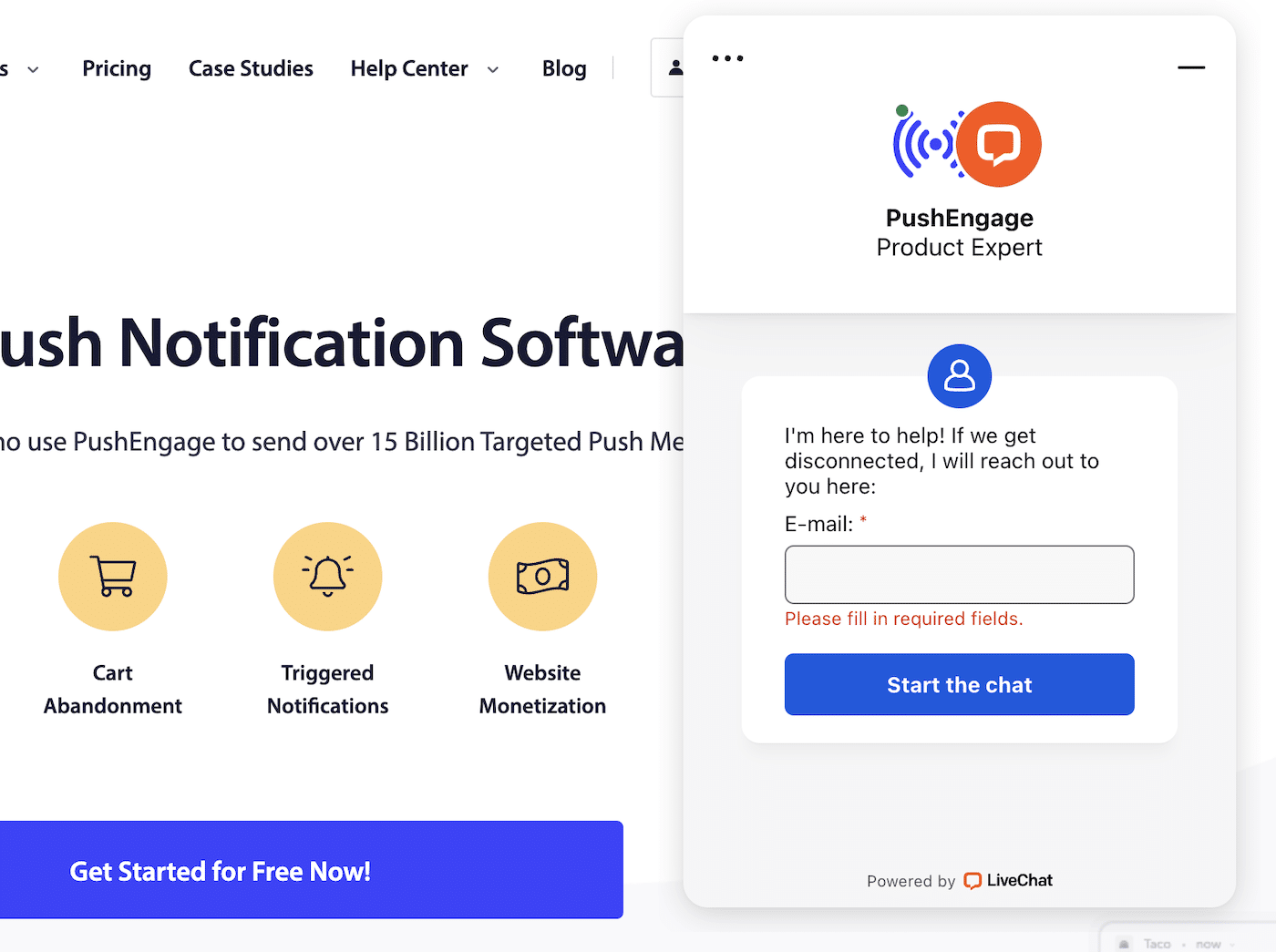
Speaking of email, it’s a good idea to include links to all your contact information and an FAQ in the footer of your transactional emails. Avoid using no-reply email addresses so that customers can easily get in touch about their orders.
Transactional emails also play a crucial role in customer support. When a customer submits a support ticket, sending a confirmation email acknowledges their request and provides reassurance that their concern is being addressed. This email should include a ticket number, a summary of the issue, and an estimated timeline for resolution.
By focusing on putting the customer first, you’ll:
- Resolve issues efficiently
- Build a reputation for reliability and customer-centricity
- Differentiate your eCommerce brand, which is especially important in competitive industries
4. Improve Delivery Updates and Transparency
In the age of instant gratification, customers expect nothing less than complete visibility into the status of their orders. By providing detailed delivery updates, your customers will feel informed and valued.
Real-time tracking updates via email are a game-changer when it comes to building trust with your customers.
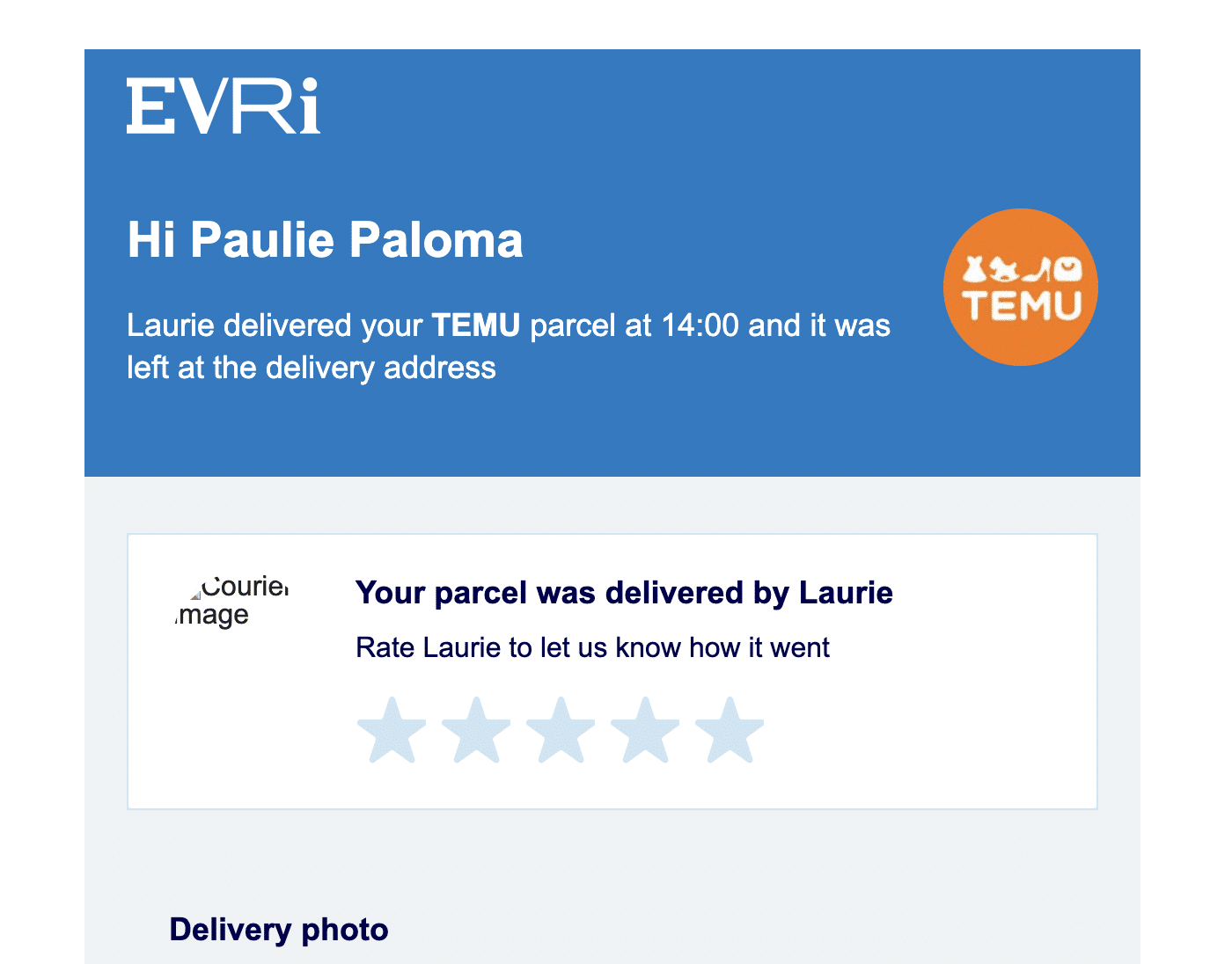
This means sending timely emails at each stage of the delivery process:
- Order confirmation
- Shipping confirmation with tracking number
- Out for delivery notification
- Delivered confirmation
Remember, the customer experience doesn’t end when the order is placed. By providing proactive, transparent, and timely delivery updates, you show customers that you value their business and are committed to their satisfaction, ultimately improving customer retention.
5. Simplify the Returns and Refunds Process
Returns and refunds are an inevitable part of running an eCommerce business. While it’s essential to minimize returns through accurate product descriptions and high-quality images, having a customer-friendly returns and refunds process can turn a potentially negative experience into a positive one.
A clear and fair return policy is essential. Be transparent about your return window and any associated costs (e.g., shipping fees). Display your return policy prominently on your website and link to it from order confirmation emails.
Transactional emails also play a crucial role in keeping customers informed throughout the returns and refunds process. When a customer initiates a return, send a confirmation email outlining the next steps and an estimated timeline for processing the return.
These emails not only keep customers informed but also demonstrate your business and processes are run smoothly and efficiently, contributing to a positive customer experience.
6. Keep the Conversation Going with Post-Purchase Engagement
The period after a customer makes their order or receives their item should not be the end of your relationship. Rather, this is a critical time to request valuable customer feedback, and lay the groundwork for long-term loyalty.
One of the most effective ways to keep the conversation going after a purchase is through transactional emails.
For example, a few days after the customer receives their order, send a follow-up email requesting a product review. Not only do reviews provide valuable social proof for future customers, but they also give you insights into what customers love (or don’t love) about your products.
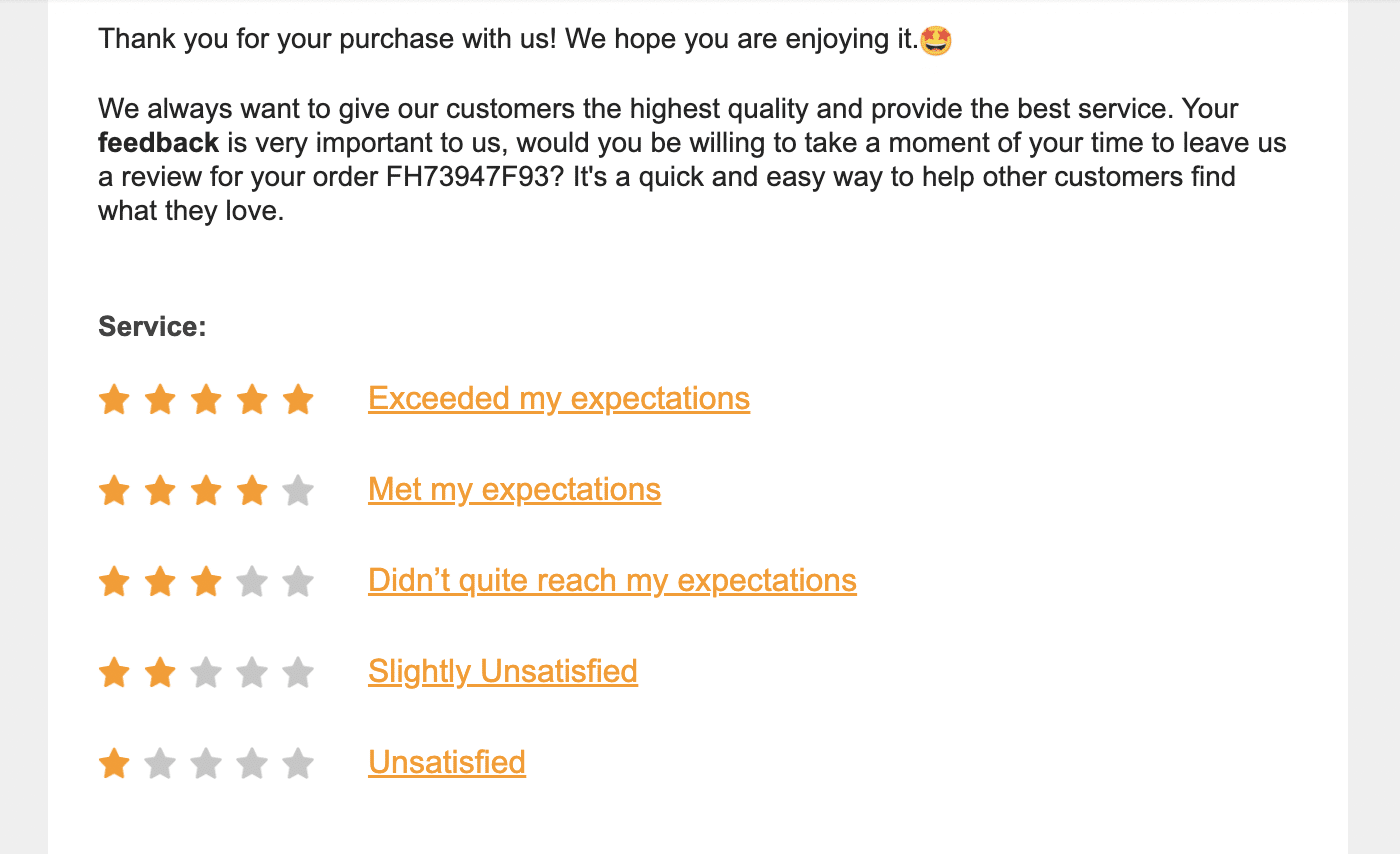
Push notifications and mobile apps can also be powerful tools for post-purchase engagement. Use them to keep customers in the loop about upcoming sales, promotions, and new product launches.
Just be sure to use these channels sparingly and allow customers to easily opt-out if they prefer not to receive these types of notifications.
Finally, don’t underestimate the power of a simple “thank you.” A simple automated email to express your gratitude for a customer’s purchase can go a long way in promoting repeat business and improving customer retention.
7. Implement Loyalty Programs
At their core, loyalty programs are all about rewarding customers for their purchases and encouraging repeat business. By offering points, discounts, or other incentives based on a customer’s purchase history, you can keep customers coming back to your store, increasing customer lifetime value.
But to truly reward loyalty, you need to offer exclusive benefits that make your customers feel like valued members of a special club. For example, you could offer early access to new product launches or exclusive members-only discounts.
Again, transactional emails are the perfect channel for communicating loyalty program updates and rewards. When a customer earns points or unlocks a new tier of benefits, send them an email celebrating their achievement and outlining what they’ve earned.
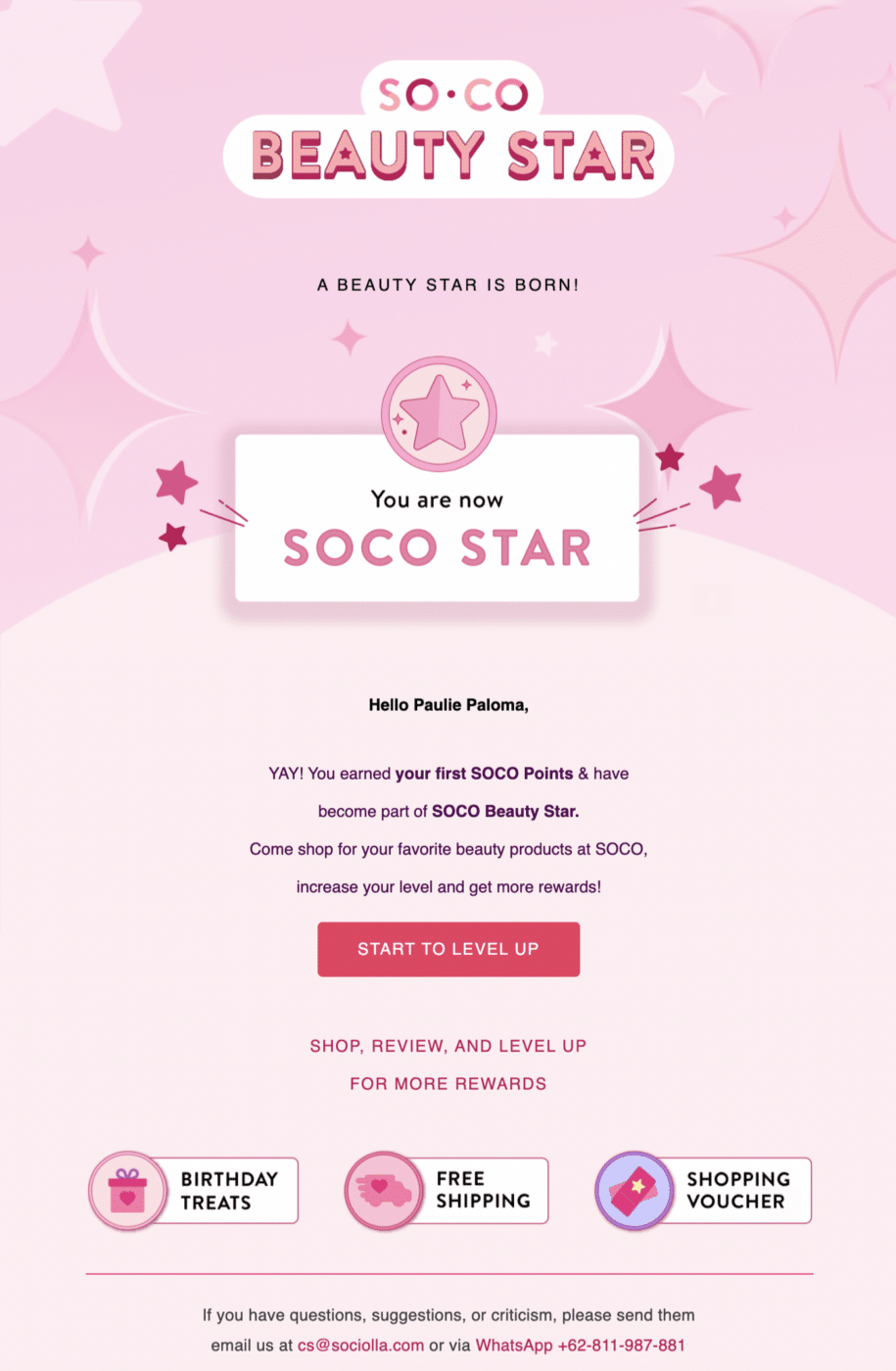
With the right loyalty program in place, you can turn one-time buyers into loyal customers and lifelong brand advocates who will support your business for years to come.
Unlock eCommerce Success Through Customer Experience
Throughout this article, I’ve suggested several starting points for improving eCommerce customer experience, from personalization and streamlined processes to the more human side of providing exceptional customer support.
Communication is at the heart of many of these strategies, and email is often the most suitable vehicle for that communication.
Transactional emails, like order confirmations, shipping updates, and post-purchase follow-ups keep customers informed, engaged, and connected to your brand throughout the entire customer journey, ultimately leading to better customer satisfaction and a healthier bottom line.
With SendLayer, you can ensure that your transactional emails are delivered reliably and securely, with real-time tracking and metrics to help you monitor performance and optimize your customer experience strategy over time.
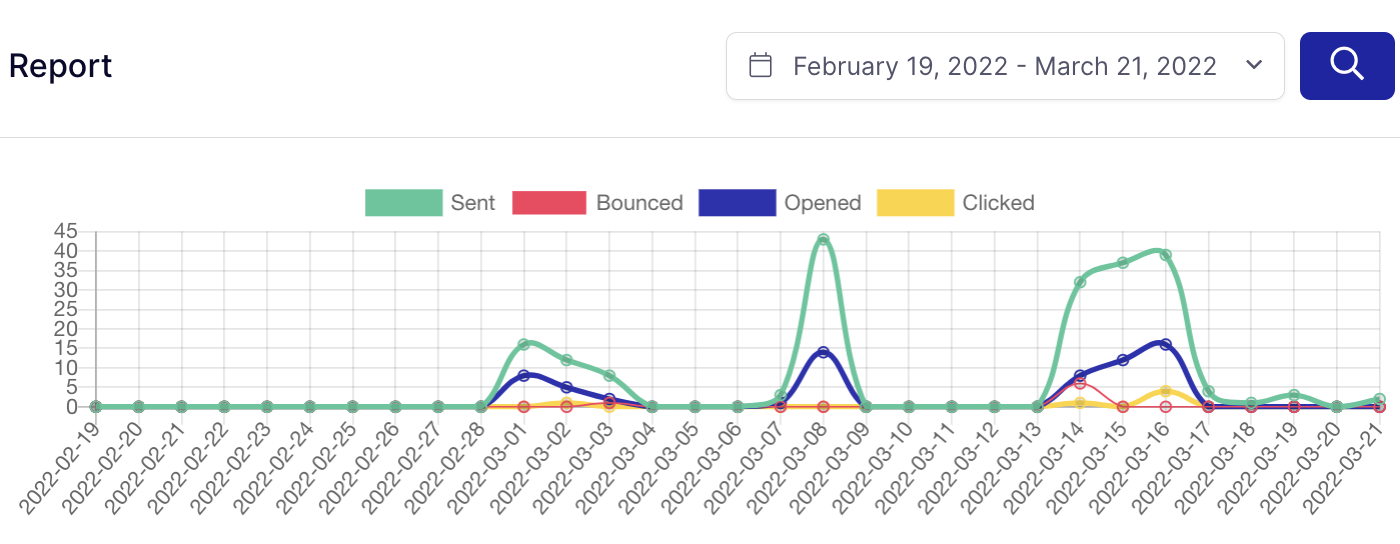
SendLayer offers seamless integration with popular eCommerce platforms, as well as customer service software like Help Scout and Front. Plus, SendLayer’s team of email experts is always available to offer guidance, support, and advice on email deliverability issues.
By focusing on customer needs and leveraging the power of automation and artificial intelligence, you can create a customer-centric eCommerce experience that drives loyalty, increases customer retention, and boosts your brand reputation through positive word-of-mouth. Implementing these strategies will not only meet customer expectations but exceed them, setting your eCommerce business up for long-term success.
That’s it! Now you know how to improve eCommerce customer experience
Next, would you like to learn how to check if your eCommerce emails have reached the inbox? Check out our tutorial on how to check email delivery status for more information.
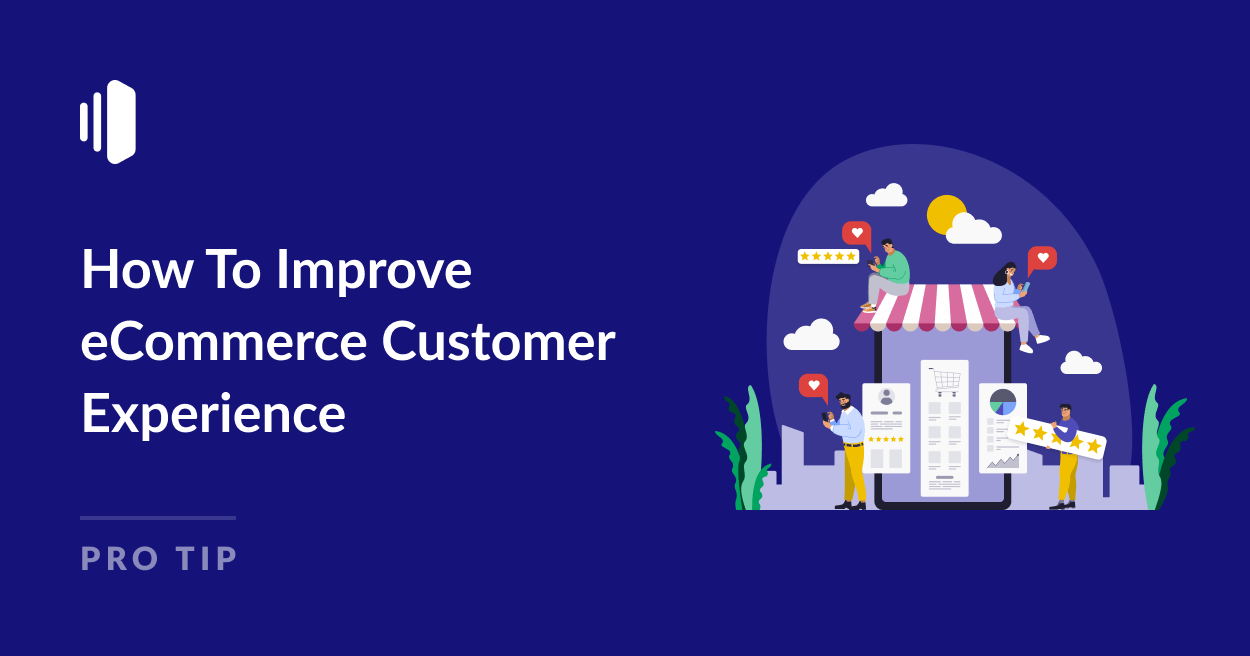
0 comment on "How To Improve eCommerce Customer Experience (8 Ways)"